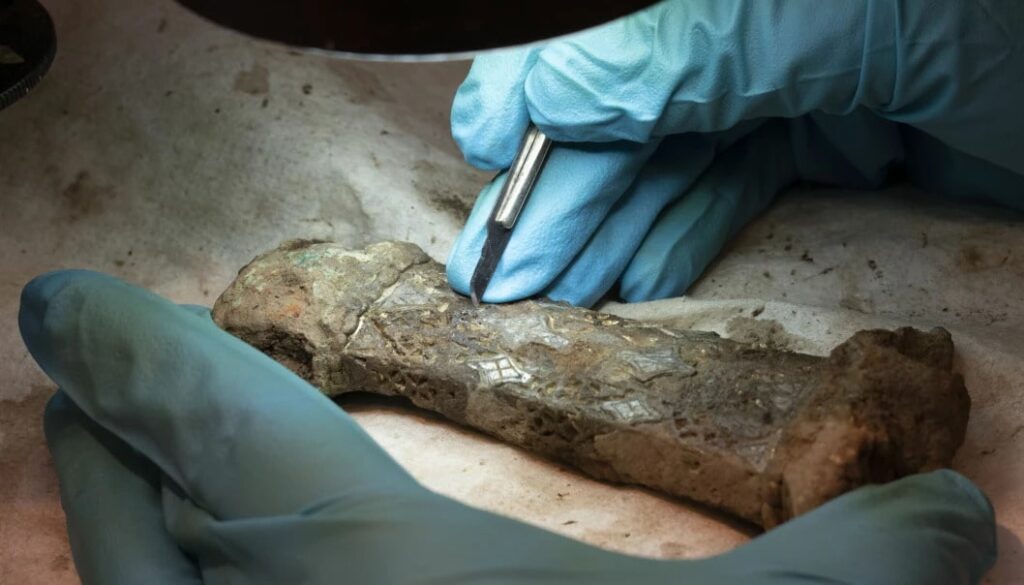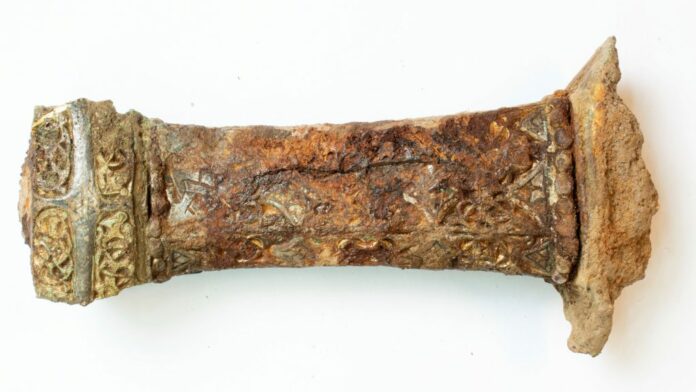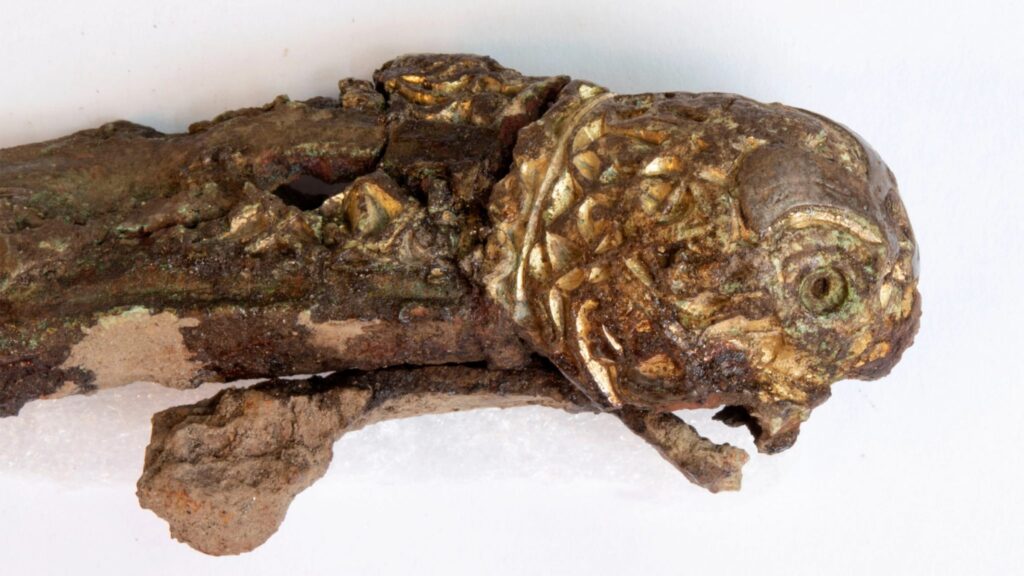On the western coast of Norway, a groundbreaking archaeological find has brought to light a unique Viking Age sword. This artifact stands out as one of the most decorated and substantial in terms of weight, showcasing the exceptional craftmanship and cultural interactions of the Viking period. The sword was discovered in the Gausel region of Stavanger and serves as a remarkable example of the Vikings’ advanced metallurgical abilities and artistic flair.

Unveiling the Artifact
The initial discovery occurred last year when a hobbyist using a metal detector stumbled upon a sword fragment on a Gausel farm. This year, the discovery continued when another metal detecting enthusiast found a significant part of the sword’s hilt in the same vicinity. Archaeologists were thrilled when they realized that these two fragments fit together seamlessly, completing a section of a lavishly decorated Viking Age sword. This site is also near a luxurious grave of a Viking woman that was excavated in 1883.

The Initial Discovery
The journey began with the uncovering of a small, oddly shaped piece of metal which the discoverer, uncertain of its importance, handed over to the Stavanger Archaeological Museum. A year later, a colleague of the original discoverer unearthed a more substantial piece of the ornately adorned sword hilt in the same field. The museum’s conservators quickly identified that this piece corresponded with the earlier fragment.

The D-Sword
This particular hilt is from a variant of Viking swords known as the D-sword, noted for its hefty build and intricate ornamentation. Despite over 3,000 Viking swords being found, only about 20 of these D-swords have surfaced across Norway. These swords, either imported or expertly replicated by local craftsmen, display a decorative style indicative of the early 9th century.
Exquisite Ornamentation
While some details of the hilt are still under examination, the visible ornamentation includes gilded designs characteristic of the animal motifs popular during the Iron and Viking Ages (around 550 to 1050 AD). Additionally, the hilt showcases silver geometric patterns crafted using the niello technique, which incorporates a metallic alloy to produce black accents on silver. The crossguard ends are fashioned into animal heads, enhancing the sword’s distinctive appearance. This sword likely originated from the Frankish Empire or England, with the closest known counterpart being a sword from a ninth-century grave on Scotland’s Isle of Eigg.

Expert Commentary
Archaeologist Zanette Glørstad from the University of Stavanger’s Museum of Archaeology expressed the importance of this discovery, noting, “The craftsmanship is of exceptionally high quality, and the combination of lavish and intricate decorations along with the unique design of the crossguard distinguishes this sword as a truly extraordinary artifact,” as per a museum press release.
Conservation and Exhibition
Currently, the hilt is undergoing meticulous cleaning and preservation. Upon completion, it will be exhibited permanently at the Stavanger Archaeological Museum, allowing visitors to admire this significant piece of Viking legacy.
Conclusion
The unearthed Viking Age sword significantly enriches our comprehension of Viking craftmanship and their extensive cultural exchanges. With the hilt’s conservation underway, it is set to become a pivotal exhibit, shedding light on the sophisticated and elaborate world of the Vikings.



